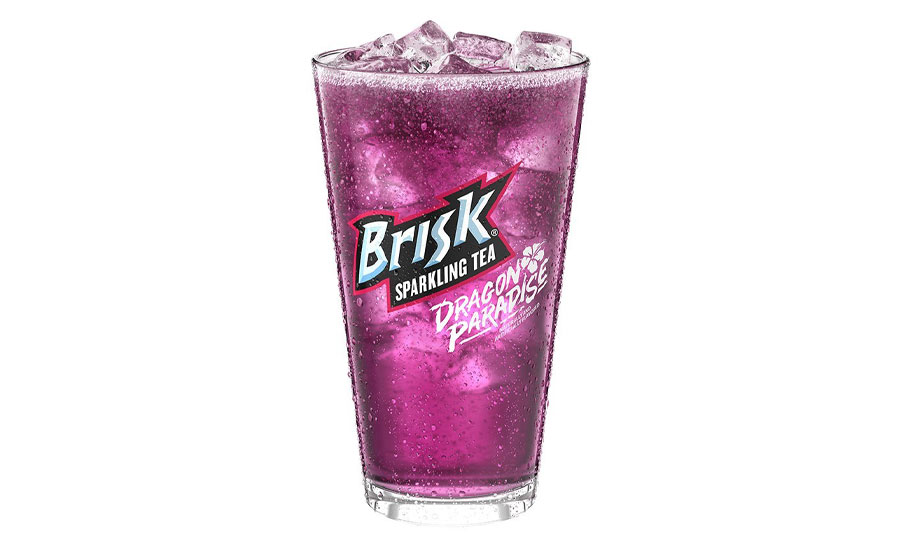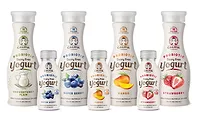Channel Strategies
Foodservice industry regains footing after multiple years of decline
New, innovative offerings play key role in beverage’s performance within the channel

(Image courtesy of The Coca-Cola Co.)
In the 1980 American romantic comedy “The Comeback Kid,” Bubba Newman, a minor league baseball player, decides to quit the sport and do something else, as he feels down and out with his life. However, by finding romance and forming life-changing relationships while coaching a group of underprivileged kids, Newman demonstrates perseverance and the ability to overcome downturns and rebounds to victory. Following multiple years of downturn, the foodservice industry, much like Newman, has demonstrated perseverance and is making a comeback.
Despite a rough few years brought on by the COVID-19 pandemic, the foodservice industry is beginning to regain its footing, experts note.
“Over the last year, restaurants and other on-premise outlets that were most negatively impacted by the pandemic fared the best,” says Gary Hemphill, managing director of research for New York-based Beverage Marketing Corporation (BMC). “It was a rebound year, in a sense. After [multiple years of] soft performance, on-premise outlets regained their footing as people increasingly went out.”

Image courtesy of PepsiCo
On-premise visits to outlets such as independent restaurants are contributing to the industry’s recovery. According to a press release from Port Washington, N.Y.-based market research group The NPD Group, visits to independent restaurants increased by 12% in the 12 months ending in March. These locally owned operations still represent 53% of total restaurants in the United States, despite bearing the brunt of the pandemic dining room lockdowns and restrictions, the press release states.
Although significant, independent restaurants aren’t the only operation contributing to the foodservice industry’s recovery. David Henkes, senior principal and head of strategic partnerships at Chicago-based Technomic, highlights the impact chains have had during the past few years. “Boosted by the reversal of pandemic-related operating restrictions combined with historically high levels of inflation, Top 500 chain sales volume hit a total of $361 billion in 2021, increasing by 18% on an annual basis,” he says.
Henkes adds that the performance of the Top 500 chains managed to surpass its pre-pandemic benchmark, with 2021 sales improving by more than 8% relative to 2019.
When it comes to fast-food chains, chicken concepts maintained a heavy momentum during the past year. “Paced by strong growth of heavy-hitters like Chick-fil-A, Raising Cane’s Chicken Fingers and Wingstop, the chicken menu category achieved double-digit sales growth once again in 2021, as sales expanded by more than 13% on an annual basis,” Henkes explains.
An evolving situation
Although the foodservice industry is faring positively, it’s not without its challenges. Specifically, the industry is dealing with staffing shortages as a result of the pandemic, experts note.
“After laying off employees during the depths of the pandemic, it’s been a challenge for many restaurants to get these employees to return,” BMC’s Hemphill says. “Some restaurants have simply tried to do more with less. Others have cut back on service or limited hours of operation. Some restaurants have had to increase pay. It’s an evolving situation.”
Technomic’s Henkes echoes similar sentiments on the staffing challenges currently plaguing restaurants, noting that it’s actually one of the biggest challenges industry operators have. “[Operators] are responding to these challenges by increasing wages to attract talent, and when they don’t have the labor, they’re often shutting down parts of the dining room or closing early,” he says.
Staffing challenges present an opportunity for change, experts note. Historically low pay, inadequate benefits and long hours that have plagued the foodservice industry for decades are now further compounded by concerns about personal safety and stability raised by the pandemic, according to Mintel’s “2022 US Foodservice Trends” report.
To attract and retain talent, operators are reassessing their business models to truly take care of their employees as much as their diners, which means menus and work weeks are getting shorter, automation is streamlining food preparation and higher wages and expanded employee benefits are becoming the industry norm, the report continues.
Beverages’ vital role
Beverage sales have played a vital role in the foodservice industry’s recovery during the past year.
“In general, beverages are highly profitable,” Technomic’s Henkes says. “As in-person dining has returned, operators have been able to reclaim lost beverage sales. We expect beverages to grow faster than the industry as a result, although the recovery to full pre-pandemic sales levels may take several years with off-premise still an elevated part of the industry.”
Henkes specifically points to the positive performance of premium beverages including mocktails, low-to-no alcohol drinks, bubble teas and cold-brew coffees.
BMC’s Hemphill adds that beverages with functional attributes such as health and wellness and energy also are driving the market forward.
For beverages to continue their positive performance within the foodservice industry, experts note that restaurateurs are going to have to get creative with their offerings ― and a number of them are.
For example, Purchase, N.Y.-based iced tea brand Brisk, recently announced the launch of Brisk Dragon Paradise Sparkling Iced Tea, available exclusively at Taco Bell restaurants nationwide. The drink is a blend of tropical dragon fruit, raspberry and blackberry flavors with a hibiscus tea base.
The Coca-Cola Co., Atlanta, also is getting creative with its beverage offerings. At the 2022 National Restaurant Association Show, it debuted the Coca-Cola Freestyle 8100, a new back-of-house dispenser developed specifically for the crew serve-occasion. The dispenser, complete with more than 200 beverage choices, streamlines drink pouring for foodservice crews, helping reduce drive-thru wait times for diners while providing the quality and variety customers crave, the company stated in a press release.
New beverage innovations, such as the Coca-Cola dispenser and other retailer-exclusive offerings, will contribute to the foodservice industry’s steady performance this year. As for the industry’s future, experts predict continued recovery, but carefully are watching to see if inflationary pressures or economic downturn will deter performance.
Looking for a reprint of this article?
From high-res PDFs to custom plaques, order your copy today!






